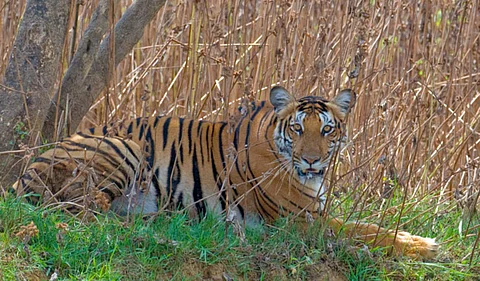

BENGALURU: With the final walk of forest department staffers at Bannerghatta National Park (BNP) in the transect survey, the tiger census exercise has drawn to a close at most prime tiger reserves, national parks and wildlife sanctuaries in the state.
The sign survey was done in BNP last week, while the transect survey started on Monday. The census exercise now remains to be held in Kali Tiger Reserve, and as per permission from the National Tiger Conservation Authority (NTCA), it will be done in March.
A total of 230 staffers patrolled the national park on foot, spread across 260 sqkms, covering 23 beats. The forest department drew 23 transect lines and a total of 69 trails were covered. Of the total 194 camera traps allotted to be installed in BNP, so far, 80 have been fixed and the remaining 114 will be fixed in the next two days.
The BNP is important for the census exercise as it falls at the tip of the Western Ghats connecting Cauvery Wildlife Sanctuary and is also part of the elephant corridor, linked to Tamil Nadu. During the last census, BNP was not covered, as the lone wandering male tiger was not noted in 2018. Now, as reports of the forest patch housing two more tigers are making the rounds, camera trapping, identifying and noting them has become crucial for the NTCA and Ministry of Environment, Forests and Climate Change.
“Due to BNP’s proximity to Bengaluru, many had applied to volunteer for the census. But in the wake of Covid restrictions, we decided not to involve anyone. Since it is also the dry fire season, we wanted to be more cautious,” Deputy Conservator of Forests, BNP, Ramesh Kumar told TNIE. Officials from the forest department pointed out that the survey plays a crucial role because the fragmented forest patch has a contiguous boundary, which is also part of the elephant corridor.